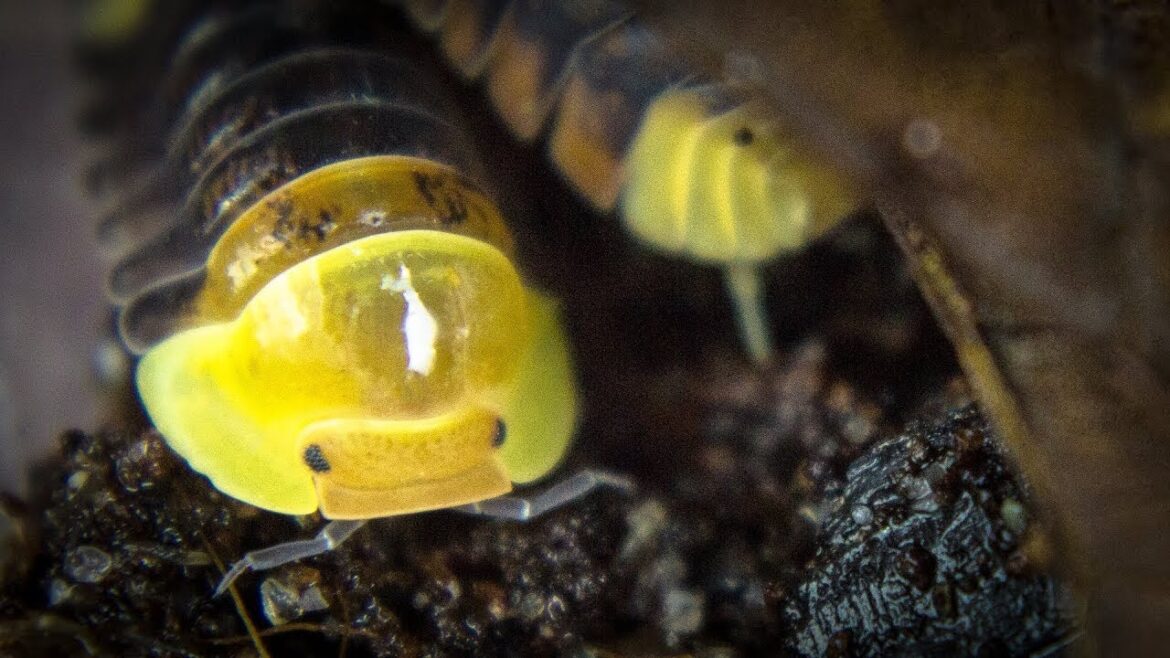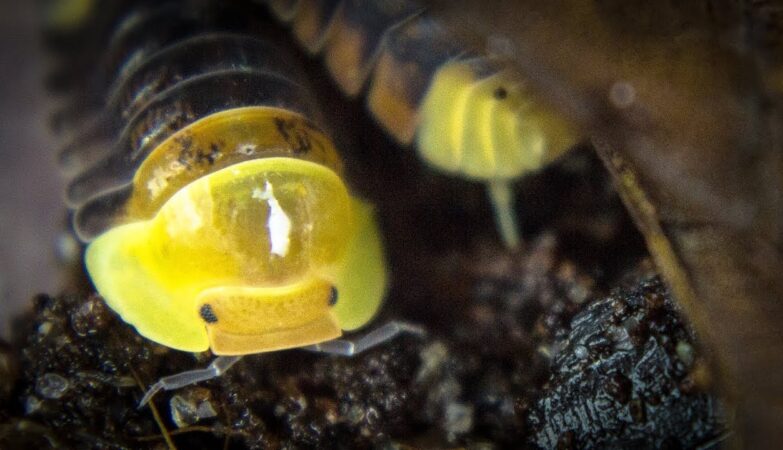The realm of isopods is as intriguing as it is diverse. These small, segmented creatures are found in a range of environments, from the depths of the ocean to the damp underbrush of a forest. Often overlooked due to their small size and unassuming appearance, isopods play a significant role in their ecosystems. Whether you are a budding naturalist, a hobbyist collector, or someone intrigued by nature’s lesser-known creatures, this comprehensive guide to isopods will provide you with everything you need to know.
What Are Isopods?
Isopods are crustaceans that belong to the order Isopoda. With over 10,000 known species, they are a versatile group, inhabiting a variety of habitats across the globe. While most people are familiar with terrestrial isopods like the common pill bug (Armadillidiidae family), the majority of isopod species actually reside in marine environments. From deep-sea vents to coral reefs, isopods have adapted to an array of ecological niches.
Types of Isopods
- Terrestrial Isopods: Commonly referred to as woodlice, these are the isopods most people recognize. They thrive in moist environments like leaf litter, under logs, and in garden soil. Popular examples include the pill bug and the sow bug.
- Marine Isopods: These species are much more diverse and can be found in a variety of marine habitats. Some are scavengers, while others are parasitic, attaching themselves to fish and other marine organisms.
- Freshwater Isopods: Though less common, some isopods have adapted to freshwater environments such as streams, rivers, and lakes.
The Role of Isopods in the Ecosystem
Isopods are vital decomposers in many ecosystems. Terrestrial species break down leaf litter and decaying wood, returning essential nutrients to the soil. Marine isopods, on the other hand, often act as scavengers, feeding on dead fish and other organic matter. This scavenging behavior helps keep aquatic environments clean and reduces the spread of disease.
The Anatomy of Isopods
Isopods are characterized by their segmented bodies, which are divided into three main parts: the head, thorax, and abdomen. Each segment typically has a pair of legs, giving them a total of 14 legs. Their hard exoskeleton provides protection against predators and environmental hazards. Some isopods, like the pill bug, can roll into a ball when threatened, a behavior known as conglobation.
Unique Features of Isopods
- Antennae: Isopods possess two pairs of antennae, which they use for navigation and sensing their environment.
- Compound Eyes: Many isopods have compound eyes, which allow them to detect movement and changes in light.
- Brood Pouch: Female isopods carry their eggs in a special pouch called a marsupium, located on the underside of their bodies. This ensures the eggs are protected until they hatch.
Isopods as Pets: A Growing Trend
In recent years, isopods have gained popularity as pets, especially among reptile and amphibian enthusiasts. They are often used in bioactive terrariums to help break down waste and aerate the soil. The most popular species for this purpose are dwarf white isopods (Trichorhina tomentosa), giant canyon isopods (Porcellio dilatatus), and powder orange isopods (Porcellionides pruinosus).
Benefits of Keeping Isopods
- Natural Cleaners: Isopods help keep terrariums clean by consuming decaying plant matter, uneaten food, and animal waste.
- Low Maintenance: They require minimal care compared to other pets, making them ideal for beginners.
- Educational Value: Observing isopods can be a fascinating way to learn about decomposition and ecosystem dynamics.
Habitat and Care for Pet Isopods
If you’re considering keeping isopods as pets, it’s essential to provide them with the right environment. Here are some tips for setting up a suitable habitat:
1. Enclosure:
- Choose a container with a secure lid to prevent escapes. A plastic or glass terrarium with ventilation is ideal.
- Add a layer of moist substrate, such as coconut fiber or peat moss, which mimics their natural environment.
2. Moisture:
- Isopods require a humid environment to thrive. Mist the enclosure regularly to maintain humidity levels between 60-80%.
3. Temperature:
- Most isopods prefer a temperature range of 70-80°F. Avoid placing the enclosure in direct sunlight or near heat sources.
4. Food:
- Provide a balanced diet of leaf litter, decaying wood, and vegetables. Supplement with fish food flakes or cuttlebone for added calcium.
5. Hiding Spots:
- Isopods like to hide during the day. Provide plenty of cover with pieces of bark, rocks, or leaf litter.
The Scientific Significance of Isopods
Isopods are not just fascinating pets or efficient decomposers; they are also significant subjects in scientific research. Their diverse habitats and adaptability make them excellent models for studying evolution, adaptation, and speciation.
Evolutionary Studies
Research on isopods has provided valuable insights into the process of speciation and adaptive radiation. For example, the varied morphologies and behaviors of cave-dwelling isopods have shed light on how species evolve in isolated environments.
Ecotoxicology
Due to their sensitivity to environmental changes, isopods are often used as bioindicators to assess soil and water quality. Studies have shown that isopods can accumulate heavy metals and other pollutants, making them useful for monitoring ecosystem health.
Threats to Isopod Populations
Despite their resilience, isopods face several threats that could impact their populations. Habitat loss, pollution, and climate change are among the most significant challenges. In particular, terrestrial isopods are vulnerable to soil degradation and the destruction of leaf litter habitats. Marine isopods, meanwhile, are affected by ocean pollution and the decline of coral reefs.
Conservation Efforts
Efforts to protect isopod populations are currently limited, but increasing awareness about their ecological importance is crucial. Conservation measures such as habitat restoration and pollution control can help safeguard these essential creatures.
Interesting Facts About Isopods
- Deep-Sea Giants: The giant isopod (Bathynomus giganteus) can reach lengths of up to 19 inches, making it one of the largest isopods in the world.
- Symbiotic Relationships: Some isopods live in symbiosis with other marine organisms, such as fish and corals, providing benefits like cleaning parasites.
- Self-Sufficient Diet: Isopods can consume a wide variety of organic matter, from decaying leaves to animal remains, making them highly adaptable feeders.
Isopods in Popular Culture
Although not as well-known as other arthropods, isopods have made their way into popular culture in surprising ways. They have appeared in video games, nature documentaries, and even as inspiration for robot designs due to their unique body structure and movements.
Isopods as Inspiration for Robotics
The robust and adaptable design of isopods has inspired researchers in robotics. Their segmented bodies and efficient locomotion are being studied to develop robots capable of navigating complex terrains. This is a testament to the isopod’s remarkable engineering, honed over millions of years of evolution.
Final Thoughts: The Underappreciated World of Isopods
Isopods may be small, but their impact on the natural world is enormous. Whether breaking down organic matter, serving as a food source for other animals, or inspiring technological innovations, isopods are a testament to the complexity and interconnectedness of life on Earth. By gaining a better appreciation for these humble creatures, we can learn more about the ecosystems they inhabit and the roles they play.
If you’re curious about exploring the world of isopods further, consider observing them in nature or even setting up a small colony at home. You’ll be amazed at the diversity and behavior of these remarkable creatures, and you’ll gain a new appreciation for the hidden gems of the natural world.
By integrating isopods into your understanding of nature, you open the door to a deeper, more nuanced appreciation of the world around us. So, the next time you spot a pill bug rolling into a ball or a tiny crustacean scurrying under a rock, take a moment to observe and appreciate these fascinating creatures that contribute so much to the ecosystems they inhabit.








